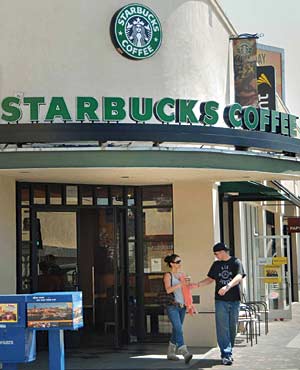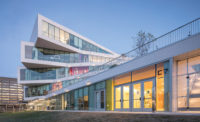Spaces of free access
The contraction of the public realm, however, extends beyond these Orwellian developments. Public space is produced from the private: In democracy, the commons is always a compact about what is to be shared, what reserved; about where we choose to interact with the other. There’s been a lot of criticism from certain academic quarters about traditional notions of public space, about overidentifying the idea with streets, squares, parks, and other historic settings for face-to-face interactions. This critique is predicated both on the idea that these spaces fail to acknowledge the existence of multiple publics and that a purely spatial definition of public space is inadequate in the Internet age (or any other). While the idea of a one-size-fits-all public arena surely risks its own oppressions, spaces of free access are foundational to civil liberty; winnowing them, whether for nominally progressive or out-and-out reactionary reasons, is very risky. Public space that excludes the civic—supporting only private forms of exchange—puts our democracy under radical threat.

Consider Starbucks. The problem with Starbucks isn’t the instance but the aggregate. I’ve just returned from several weeks in the suburbs, and Starbucks was a lifeline. Not simply the only source of decent coffee for miles, it was also an oasis of conviviality with its comfortable chairs, free newspapers, and relaxed vibe. The Starbucks I frequented was part of a big shopping center, sandwiched with a couple of other smallish shops between a monster supermarket and a gigantic Lowe’s box. Not that we had no choices: Another local supermarket had a kind of satellite Starbucks right inside the store, along with a pharmacy, a bank, and various category-stretching elements of the supermarket itself: bakery, liquor store, deli, hardware, florist, and so on. Being there, I felt a little like Nikita Krushchev on tour, visibly staggered by the sheer scale of the operation and of the choices on offer in American capital’s most perfectly staged spectacle of consumption.
A genuinely public realm
The problem with the suburbs (and, increasingly the city) lies both in the homogeneity of their formats and the frequent elusiveness of a genuinely public realm, the fact that a coffee always comes from Starbucks or Dunkin’ Donuts and that the street on which these stores sit is always a parking lot or supermarket aisle. The difficulty is not the lovely houses and gardens in the suburbs, nor the qualities of neighborliness they can produce, but an interstitial tissue that is only negotiable by car. This is a toll even more severe than the downside of congestion pricing—financially, in the alienating effects of hours spent sealed up alone, and socially, for those people it excludes. Over years of visiting elderly parents in the suburbs, I have watched their possibilities contract in a system in which a carton of milk or a visit to a friend require an increasingly perilous drive on the highway.
It’s Sunday in New York, and I’ve just returned from a walk to buy a coffee—at Starbucks. There’s one a block away and, as I’ve mentioned, the coffee is tasty, despite the foolishness I feel when forced to order a “grande” instead of a medium. While strolling over, I’ve counted the security cameras on the single block between here and there. There are 15 visible to me. Fifteen. This paranoid voyeurism by the authorities surely contracts our relationship to the spaces over which we—whatever “public” we happen to belong to—exercise proprietorship and in which we feel comfortable and “at home”. The line between the friendly cop on the corner and Big Brother is not obscure.
Too high a price
I’d love to get some traffic out of the neighborhood, but those cameras may be too high a price to pay. Such are the ambiguities of unfreedom that the exclusion of cars on the one hand and their indispensability on the other can be servants of the same agendas of monitoring and control. At the same time, their use (or nonuse) remains emblematic of the freedom at the core of what makes both cities and suburbs desirable to their denizens. Technology is a human artifact, and its role in culture is neither autonomous nor neutral. I have no doubt that we are at a watershed not simply in terms of the way in which we deploy technologies of surveillance, mobility, and control, but that the character of the public realm is under enormous threat from both too much government intervention (by the get-government-off-our-backs creeps in power) and the concession of too much of the public realm to private interest. A shopping mall is not the same as a street, and a security camera on every corner is not your pal.





Post a comment to this article
Report Abusive Comment